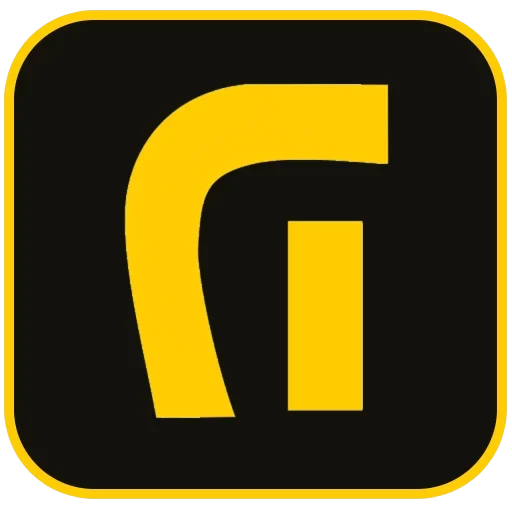Introduction: The Trifecta of Digital Success
In today’s hyper-competitive digital marketplace, simply having a website is the equivalent of having a business card with no contact information. To achieve meaningful online success, your website must be more than just a digital brochure; it needs to be a high-performance engine for growth. The effectiveness of this engine depends on the seamless integration of three critical pillars: website speed, Search Engine Optimization (SEO), and User Experience (UX). These elements are not isolated disciplines but a deeply interconnected trifecta that creates a virtuous cycle: a faster site enhances user experience, which in turn sends positive signals to search engines, boosting your SEO and driving more traffic. This comprehensive guide will explore the nuances of each component and provide actionable strategies for holistic website optimization.
The Need for Speed: Mastering Website Performance and Core Web Vitals
Website loading speed is the first impression you make on a visitor. In an era of dwindling attention spans, users expect pages to load almost instantaneously. A delay of even a few seconds can lead to a significant increase in bounce rates, meaning potential customers leave your site for a competitor’s before you even have a chance to engage them. More importantly, Google has made page experience, measured by a specific set of metrics, a confirmed ranking factor.
Understanding Google’s Core Web Vitals (CWV)
Core Web Vitals are the definitive metrics Google uses to quantify a user’s real-world experience on a webpage. They measure dimensions of web usability such as load time, interactivity, and the stability of content as it loads. Excelling in these areas is crucial for both user satisfaction and SEO performance.
- Largest Contentful Paint (LCP): This metric measures the time it takes for the largest content element (e.g., an image or block of text) on the page to become visible within the viewport. A good LCP score is 2.5 seconds or less. Slow server response times, render-blocking JavaScript, and unoptimized images are common culprits for poor LCP.
- Interaction to Next Paint (INP): Replacing First Input Delay (FID), INP assesses a page’s overall responsiveness to user interactions. It measures the latency of all clicks, taps, and keyboard inputs throughout the user’s visit. A good INP is below 200 milliseconds. This is impacted by heavy JavaScript execution that ties up the main browser thread.
- Cumulative Layout Shift (CLS): CLS measures visual stability by quantifying how much unexpected layout shifts occur during the entire lifespan of the page. A good CLS score is less than 0.1. This annoying phenomenon is often caused by images or ads loading without reserved space, or fonts loading and causing a flash of unstyled text.
Actionable Strategies to Improve Website Speed
To meet and exceed the benchmarks set by Core Web Vitals, a multi-faceted approach to performance optimization is required.
1. Advanced Image Optimization
Images are often the heaviest assets on a webpage. Simply compressing them is not enough. A modern strategy includes:
- Next-Gen Formats: Serve images in modern formats like WebP or AVIF, which offer superior compression and quality compared to traditional JPEGs and PNGs.
- Responsive Images: Use the `srcset` attribute in your HTML to provide multiple image sizes, allowing the browser to select the most appropriate one for the user’s device and screen size.
- Lazy Loading: Implement lazy loading for images that are below the fold. This technique defers the loading of off-screen images until the user scrolls down to them, speeding up the initial page load.
2. Code Minification and Optimization
Unnecessary code and render-blocking resources can severely slow down your site. To combat this:
- Minify HTML, CSS, and JavaScript: Remove all unnecessary characters from your code, such as whitespace, comments, and line breaks, to reduce file sizes.
- Defer Non-Critical Scripts: Use the `defer` or `async` attributes for JavaScript files that are not essential for the initial page render. This prevents them from blocking the parsing of the HTML document.
- Eliminate Render-Blocking CSS: Inline critical CSS (the styles needed for the above-the-fold content) directly in the HTML head and load the rest of the stylesheets asynchronously.
3. Leverage Caching and a Content Delivery Network (CDN)
- Browser Caching: Configure your server to send caching headers, which instruct browsers to store static files (like stylesheets, images, and JavaScript) locally. This makes subsequent visits to your site much faster.
- Content Delivery Network (CDN): A CDN is a network of servers distributed globally. It stores copies of your website’s static assets and serves them to users from a server geographically closest to them, dramatically reducing latency and server load.
Technical SEO: The Architectural Blueprint for Search Visibility
If website speed is the engine, technical SEO is the chassis and blueprint of your vehicle. It involves optimizing the technical aspects of your website to help search engines crawl, interpret, and index your content more effectively. A solid technical foundation ensures that your valuable content can actually be found by your target audience.
Crawlability, Indexability, and Site Architecture
For a search engine to rank your content, it must first be able to find and understand it.
- XML Sitemaps: An XML sitemap is a file that lists all the important pages on your website, acting as a roadmap for search engine crawlers.
- Robots.txt: This file tells search engine crawlers which pages or sections of your site they should not crawl. It’s crucial for preventing the indexing of duplicate, private, or irrelevant pages.
- Logical URL Structure: Use clean, descriptive, and keyword-rich URLs. A logical structure (e.g., `asaradco.com/services/seo-optimization`) helps both users and search engines understand the page’s content.
- Internal Linking: A strategic internal linking structure helps distribute page authority throughout your site and guides crawlers to your most important content. For example, linking from a blog post to a relevant service page like SEO services can strengthen its authority.
Advanced Technical SEO Enhancements
1. Structured Data (Schema Markup)
Schema markup is a form of microdata that you add to your website’s HTML to provide search engines with more explicit information about your page’s content. This can lead to the creation of “rich snippets” in search results—enhanced listings that include elements like star ratings, FAQs, or product prices. These visually appealing results can significantly improve click-through rates.
2. Mobile-First Indexing and Responsive Design
Google predominantly uses the mobile version of a website for indexing and ranking. Therefore, a mobile-friendly experience is non-negotiable. Responsive design, which ensures your website adapts seamlessly to any screen size, is the standard for ensuring a positive experience for mobile users and complying with Google’s mobile-first approach.
3. Website Security (HTTPS)
Security is a cornerstone of technical SEO and user trust. Implementing an SSL certificate to enable HTTPS is a must. It encrypts the data exchanged between a user’s browser and your server, protecting sensitive information. Google has confirmed that HTTPS is a lightweight ranking signal, and browsers now flag non-HTTPS sites as “Not Secure,” which can deter visitors.
User Experience (UX): Designing for Engagement and Conversion
User Experience encompasses all aspects of an end-user’s interaction with your company, its services, and its products. In the context of a website, a strong UX design keeps users on your site longer, reduces frustration, and guides them toward conversion goals. Positive UX metrics, such as low bounce rates and high dwell time, are powerful indirect signals to search engines that your content is valuable and relevant.
Core Principles of High-Quality UX Design
- Intuitive Navigation: Users should be able to find what they are looking for with minimal effort. A clear, logical navigation menu, well-organized information architecture, and a functional search bar are essential components.
- Readability and Visual Hierarchy: Content should be easy to consume. Use legible fonts, adequate color contrast, short paragraphs, and clear headings (`
`, `
`) to break up text. Visual hierarchy guides the user’s eye to the most important elements on the page.
- Clear Calls-to-Action (CTAs): Every page should have a purpose. Whether it’s to “Contact Us,” “Buy Now,” or “Learn More,” your CTAs should be visually prominent and use compelling, action-oriented language.
- Accessibility (A11y): An accessible website is designed to be usable by everyone, including people with disabilities. Practices like adding descriptive alt text to images, ensuring keyboard navigability, and providing sufficient color contrast not only serve a wider audience but also have SEO benefits.
Conclusion: The Virtuous Cycle of Website Optimization
Website optimization is not a one-time project but an ongoing process of refinement. The relationship between speed, SEO, and UX is symbiotic. A technically sound SEO strategy brings users to your site. A lightning-fast loading speed ensures they don’t leave immediately. A superior user experience engages them, encourages them to convert, and signals to Google that your site is a high-quality resource worth ranking higher. By continuously measuring performance with tools like Google Analytics and Search Console, and by implementing the integrated strategies outlined in this guide, you can create a powerful, self-reinforcing cycle of digital growth that keeps you ahead of the competition.






